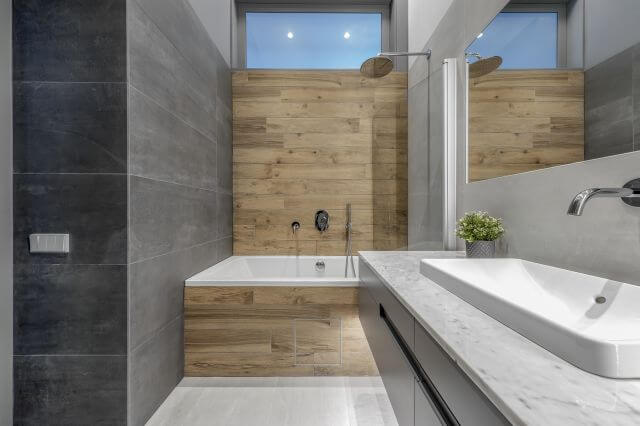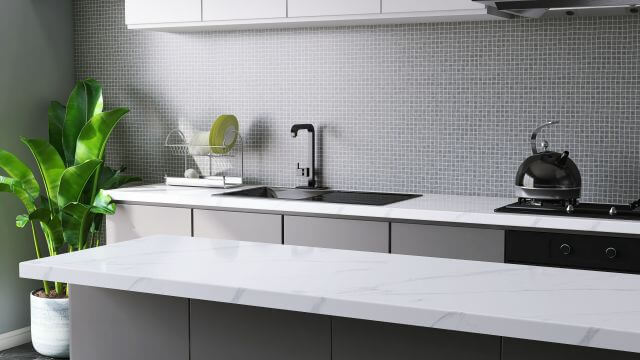Templating countertops is an essential step in achieving a flawless fit and a customized look for your kitchen or bathroom. In this article, we will guide you through the step-by-step process of templating countertops, highlighting their importance, tools required, recommended materials, and common mistakes to avoid.
Whether you are working with granite, marble, or other materials, this comprehensive guide will equip you with the knowledge to master the art of templating countertops.
What is Templating Countertop?
At its core, templating countertops involves creating an accurate template or pattern of your countertop area. This template serves as a guide for fabricators to precisely cut and shape the countertop material according to specific measurements and requirements.
Templating can be done using various techniques, including laser templating countertops and digital templating countertops. This template is essentially a digital blueprint that provides the fabricator with a detailed visualization of the layout and measurements the countertop requires.

Why are Templating Countertops Important?
Accurate templating is crucial for several reasons. Especially from the point of view of exact measurements. First, it ensures that your countertops fit perfectly within the designated space, eliminating gaps or uneven edges. Second, templating allows for the customization of countertop shapes, such as curves or angles, resulting in a unique design.
Lastly, precise templating ensures that cutouts for sinks, faucets, and other fixtures align accurately, enhancing the functionality of your space. In addition to this, for an accurate countertop template, removing the old countertops can check the flatness or levelness of the cabinets.

How is Templating Countertop Done?
Preparation
Before starting the templating process, ensure your base cabinets are level, secure, and permanent as any shifts or changes after templating can render the template inaccurate. If you plan to install under-counter appliances, sinks, or cooktops, it’s ideal to have these on-site during templating for templater.
Measurements
Skilled technicians will take detailed measurements of your existing countertop or the space where your new countertop will go. A digital measuring device or a laser template machine can be used to capture this data accurately and efficiently to ensure accurate measurements.
Observe and Mark
Analyze the space and mark down any potential conflict points such as areas with tight corners, uneven walls, or spaces to accommodate your sink, faucet, or other appliances.
Transfer Information
Now, transfer all the recorded information from your kitchen or bathroom space onto a templating material, which may be strips of plastic or corrugated plastic sheets. If you’re using a digital or laser templating system, this would involve uploading the captured data into Computer Aid Design (CAD) software.
Creating the Template’s Edge Profile
The edge profile of your countertop is outlined at this stage. Whether you’ve chosen a square, rounded, or beveled edge, your template should include this detail.
Checking the Template
Ensure you double-check all measurements and details against the template before cutting your countertop material. Don’t forget to consider areas for overhangs or backsplashes.
Fabricating the Countertop
Once verified, the template is sent to the fabricator, who will then use it to shape the countertop material to specified measurements and finishings. The digital template is particularly convenient here, as it can be directly sent to the CNC machines for precise cuts.
Installation
The final step is the installation of your well-measured and perfectly cut countertops into your kitchen or bathroom space.

What Tools Are Required for Templating Countertops?
The tools required for templating countertops vary based on the method implemented. But they are good for getting accurate dimensions. Traditional templating involves tools like hot glue guns, hot melt glue guns, razor knives, beam compasses, and durable templating strips or sheets.
Conversely, for a digital approach, technicians might use specialized laser templating equipment or digital templating software, significantly enhancing precision and efficiency. Regardless of the toolset used, accuracy is the cornerstone of successful templating.

What Types of Materials are Best for Templating Countertops?
A variety of materials can be used in templating countertops, each offering its unique perks based on cost, durability, aesthetics, and ease of maintenance. Granite countertop (Learn: Get Creative With Granite Alternatives for Countertops) is popular due to its high durability and elegant aesthetics, hence the need for proficient templating granite countertops.
Quartz countertops are renowned for their scratch resistance and non-porous (Learn: Why and How to Choose a Non-Porous Countertop) nature. Solid surface materials offer smooth seamlessness and design flexibility, while laminate provides cost-effectiveness.
More than ever, wood and concrete countertops are finding favor among homeowners for their rustic, organic appeal.
What are the Common Mistakes to Avoid in the Countertop Templating Process?
Many pitfalls can jeopardize the success of templating countertops. These principally include inaccurate measurements, overlooked details concerning the placement of sinks, hobs, or other fixtures, and not factoring in backsplashes and overhangs.
Some countertop materials, such as granite or quartz, may have limitations on the maximum size of a single slab. If your countertop area is large, it may require multiple slabs with seams to accommodate it.
Another frequent mistake is attempting to template before the base units are fully installed and secure. It’s also essential to avoid altering any positioned appliances post-templating, as this can affect the accuracy of the template.
Finally, failing to communicate effectively with your countertop fabricator (Learn: How to Select the Best Countertop Fabricator) or not thoroughly checking the template before fabrication may lead to undesired results.
alt: measure
What are the Different Techniques Used for Templating Countertops?
Templating countertops can be done using either the “analog” or “digital” method. The analog method, also known as the stick method, involves using a slab of wood or corrugated plastic and hot glue to create the template. This method, though traditional, is time-consuming and more prone to errors.
More commonly, fabricators now use the digital method, which involves recording measurements using a high-intensity laser and a computerized system or tablet. This method is faster, more accurate, and more efficient, resulting in less material waste.
Conclusion
In conclusion, templating is a crucial step in installing new countertops. This process ensures that your countertops will be a perfect fit for the kitchen or the wall, enhancing both the appearance and functionality of your home. By understanding the process and importance of templating, you can ensure a smooth and successful countertop installation.
For any countertop project, always seek skilled professionals who have the necessary experience and equipment to carry out this task with precision. Remember, the beauty and durability of your final countertop is greatly influenced by the accuracy of your template!



